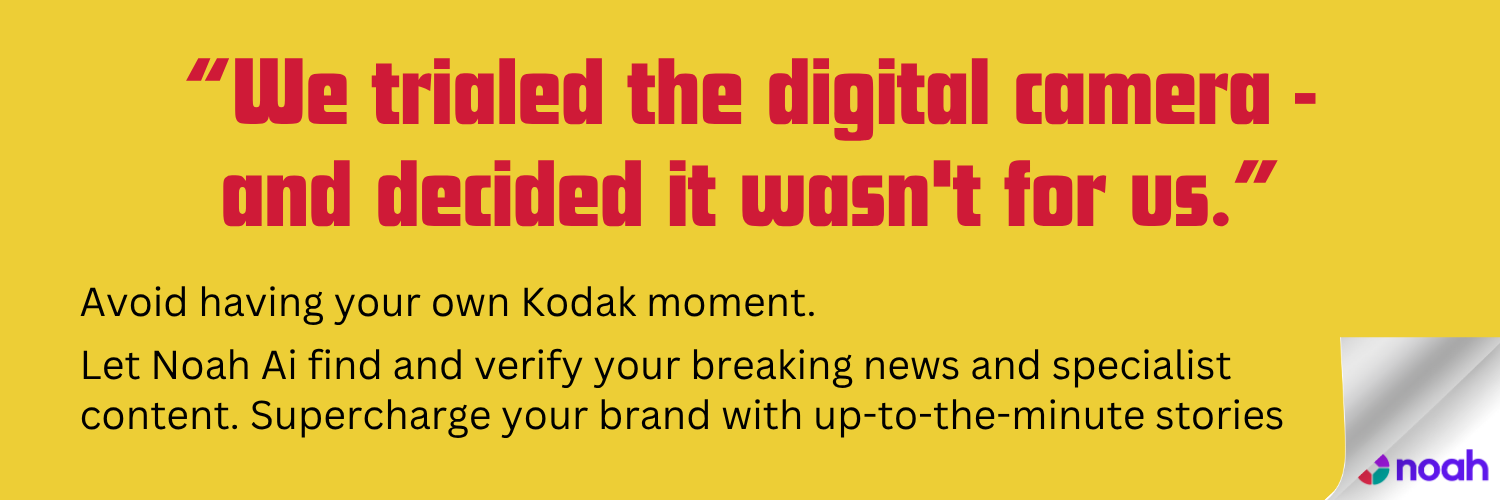Nearly a decade ago I sat in a hotel meeting room in Bermondsey, a newly revived neighbourhood of south London, with a number of colleagues from all departments of The Times and The Sunday Times.
The papers were themselves newly revived, having recently returned to profit on the back of launching digital subscriptions for the first time in forever. Earlier in 2016 they had also relaunched their smartphone app and combined their websites – we had finally convinced everyone that it made sense not to have two websites competing with each other while they were both sold under the same subscription!
By the time representatives from editorial, product, marketing, advertising and technology met, both the new app and website were already performing beyond expectations and there was an air of optimism among those present.
The agenda for the meeting was to decide what to do next. The plan had to be ambitious, it had to be eye-catching, it had to take us somewhere new. We ended up taking only an hour or two to come up with one: we would grow the subscription base to one million people by 2020.
I am excavating this now because the Daily Mail announced late last month that it was setting an ambitious goal of reaching – of course – one million subscribers by 2028. I applaud them for this because news organisations have typically been too shy in saying what their aims are, beyond just “doing world-class journalism”. However, the easy bit is setting the target and the road there is notoriously bumpy.
Because to reach a target like this you have to be prepared to fundamentally change the way you operate. At The Times, we didn’t, I’m afraid. Broadly speaking, we set the target, got approval from high up, but then carried on as normal. The editorial strategy changed not a jot (yup, “world-class journalism”); there was no increased budget for marketing; and product development descended into bug fixes.
We never looked like hitting the 1m target and it soon became the target that nobody mentioned any more. This week’s News Corp quarterly earnings report said that at the beginning of July The Times had 640,000 subscribers.
The Mail has made a great start to its subscription journey, reporting 325,000 subscribers so far. This is well beyond what many people expected and is testament to the thoughtful “test and learn” process implemented by Tom Lowe, managing director of subscriptions at the title.
But, as Tom will be fully aware, these subs will have been the easiest ones to acquire: many of them will have been “super fans” who will barely have had to think for a second about whether they wanted to take out a sub –they were always going to.
As the number of subs increases though, you are having to attract people who axiomatically don’t have the same affinity for the brand as those who signed up right away. To get them to commit to a subscription requires a lot more work.
You might need to experiment with new content areas; your marketing might need to spell out more directly what exactly a subscription gets you; your products might need to be more habit-forming to remind new subs to visit them every day.
All of this requires the organisation to truly commit to doing things differently. This is really hard to accomplish and takes a lot of time. Journalistic organisations are not known for their long-term thinking – it’s just not in the DNA of companies that are mostly thinking about the next day’s paper – but subscription businesses grow at near-glacial pace. So patience is required. Be prepared for the benefits of, say, subscription journey optimisations put in place today to show up in six to 12 months’ time.
Subscriptions are also a numbers game – and one that is not stacked in favour of the house. There may be some people in the Mail newsroom ]who think that one million subs is merely three times as many as they already have, so what’s the big deal? Of course that doesn’t take account of churn.
I don’t know the Mail’s churn rate but let’s assume it is in line with the average for the news industry and that they will lose 3.6% of their subs a month. A quick back of the envelope calculation suggests that to get to 1m subs they’ll need to acquire about 43,800 subscribers a month for each of the 38 months until their October 2028 deadline. They’ll have to get 1.6m more subs than they have now and keep around 55% of them.
Those are all very big numbers. And remember that towards the end of that period, they’ll be fishing for subs in less promising ponds. It really will require the full commitment of the organisation to achieve it.
It is possible, though. The New York Times has consistently reached its subs targets early as it continues its growth towards 15m subs. It has had to move beyond news to do so – putting more emphasis over time on Puzzles, Cooking and The Athletic. But the key was that they established their course, reorganised their business and stuck to the plan for a decade until the numbers really moved in their favour.
The Telegraph went a different route when things got sticky. After previous management declared that it would reach 1m subs by the end of 2023, it was faced with coming up short when in 2022 it attracted only a net 14,000 new subs. What did it do? It bought the Chelsea Magazine Company, which brought with it 200,000 or so subs. Job done.
This type of sleight of hand is what I hope the Mail will avoid. Likewise the “Hotel California” – you can check in but never leave – policy employed by some publishers, who will effectively give away a subscription to stop someone who says they want to churn. “I tell you what, why don’t you have this subscription for free for a few months while you decide whether you really want to cancel?” Rinse and repeat.
This is a real problem with bold targets: they can encourage bad behaviour through the best of intentions. At HBM Advisory, we favour blended targets. Ultimately, it’s great to have 1m, or 7m, or 15m subs, but only if they are high-value subs. Revenue and profitability should be attached to the target too.
At one bright spark pointed out at that meeting in Bermondsey all those years ago: “We could easily get to 1m subs if we charged £1 a year.” Indeed.
Alan Hunter is co-founder of HBM Advisory and Tomorrow’s Publisher






